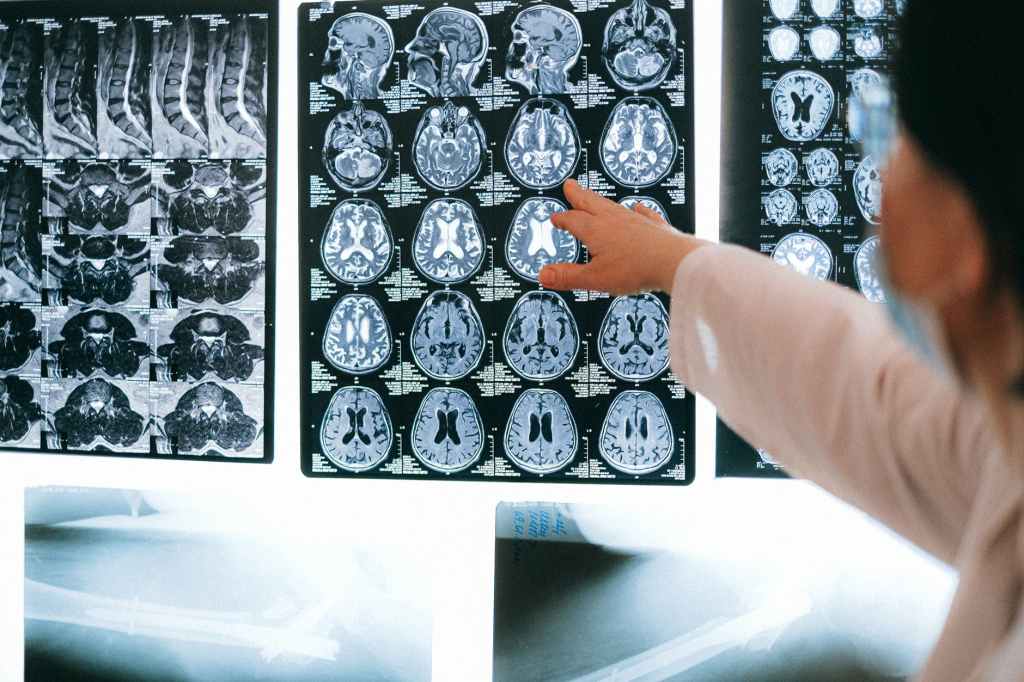
I hurt myself constantly and I am certain you do too. I am so clumsy, though I am not sure why. Maybe I try to hurry up a bit too much, I hate wasting time by lingering on any task for too long. So, for example, I often end up hitting my big toe on one of the corners of the bed base trying to get out of bed in a hurry or cutting myself on a razor haphazardly left in the bathroom drawer when trying to find my eye cream. Other than hurtful to my ego, those experiences hurtful to my body, which leads to pain. Pain is always taken for granted. You are hardly waking up every morning dreading the idea that you’ll eventually experience it, but when it does finally happen you are neither surprise. Pain is experienced by most of us, but despite its universality, very few understand how it works. Actually, can someone please tell me what the heck is pain and how can I fricking get rid of it?
It took me many years of undergraduate studies and then graduate studies to finally understand its main mechanisms, which I will now share with you. I hope that by the end of this article, you not only come to understand pain, but to appreciate it for its complexity and its vital necessity.
When you think about pain, probably you are thinking about it the same way I did before starting my post-secondary studies. I thought pain was the result of injury. You break your skin; it hurts. You hit your foot; it hurts. You fall; it hurts. You get my point. But that doesn’t explain the headache you got last week, nor does it explain the heartburn you got last time you ate greasy food. It’s easy to point fingers at possible culprits for our pain, but it’s not really clear why it causes the pain in the first place. Why does not drinking enough water causes me headaches?
So, let’s break everything into small steps. The very first thing your body does is feeling things, this is called perception. But when the body perceives something that may be hurtful to you, it becomes known as nociception. The body can sense things that are called stimuli (plural of stimulus) which is a fancy word for sensations. Those stimuli can be of thermal (heat or cold), mechanical (pressure or tension), or chemical (inflammation or toxins) nature. Then considering our example giving earlier, hitting my big toe, and cutting myself led to nociception of a stimulus of mechanical nature. As for the headache and the heartburn, it was from chemical nature. For the headache, there was probably not enough oxygen and for the heartburn, too much acid.


A. Piacquadio|Pexels.com 
Anna Shvets|Pexels.com
Now let’s look at this nociception closer. The changes are perceived by some detectors that we call pain receptors, or more specifically nociceptors. Those nociceptors can differ greatly from each other. They can have different endings which make them able to detect specific types of stimulus or they can also vary in size. The latter will influence how fast the nerve will carry the signal to the brain. It’s this difference in size that makes you sense two pain waves. For example, when you hit your toe. You first grab your toe, but it really was a few seconds after you grabbed it that the intense and sharp sensation started kicking in. This is because the large nerves carried the information related to location and nature of the pain faster than the smaller nerves. It’s those smaller nerves that were responsible to carry the information related to the intensity and emotional nature of the pain and is delayed. This whole process that we just went through is called transduction.
After transduction there is conduction, which is for us step 2. This step explains how the signal is actually sent to the brain. It will probably not be any news to you, the signal is carried by nerves, or neurons. All these neurons are organized into something that resembles a family tree. In your family tree there are your siblings, your cousins and obviously yourself. All of them serve as an analogy for the first-order neuron or most commonly called primary afferents. As suspected, they stem from wherever you can feel (skin, ears, organs, etc.), and they end at the spinal cord. In your family tree, there are also your parents, your aunts, and your uncles. Those are like the second-order neurons, there are generally fewer than the previous group. They are located in your spinal cord. Then, you have your grandparents. Those are like the third-order neurons and are present from the end of your spinal cord to your brain. Simple, isn’t it?

After the signal has reached through all the three levels of neurons and finally the brain, then there is transmission. Transmission refers to the mechanism to which all different information will be sent to their appropriate processing section. Then an output signal will be produced and will be modulated depending on its intensity and its relevance. If the intensity is too much and is not relevant, the signal may be tuned down, or reciprocally up if the situation is reversed. So that makes up two steps: Transmission and Modulation.
The very last step is Perception, and it relates not to the initial perception we introduced when we talked about transduction, but to the final products that leads to a reaction. It is at that moment you grab your toe
So, if I try to summarize everything, first you feel; secondly, the signal goes through three levels of neuron up to the brain; thirdly, the signal is interpreted by the brain; fourthly, the signal is tuned by the brain and lastly it is sent back to the appropriate location to create a reaction. Normally, it takes all those steps to induce pain, but there are some cases where the pain seems to appear out of thin air. That pain is often said to be neuropathic. Where signals are generated in the absence of stimulus detection which is common in chronic muscular diseases.
Reversely, there is another disease that leads to the inability to generate pain. Doesn’t that sound wonderful, right? People affected by congenital insensitivity to pain with anhidrosis (CIPA) would disagree. Pain is a protective mechanism that forces you to have a reaction when faced to a potentially harmful stimulus. Without pain, most people with CIPA will die before the age of 25. They usually end up burning themselves seriously, biting off their tongues or scratching to the bone, which could eventually lead to infection, which can also lead to death. These are only examples of things that may happen to you without the ability to generate pain. Pain is so important since it is there to avoid putting yourself under unnecessary harm.

Pain can also be split into two categories: acute and chronic. We talk about acute pain when dealing with a situation that is sudden and ephemeral (that doesn’t last in time). In contrast, we talk about chronic pain when it’s persistent in time, usually more than three months. So all previously mentioned pain examples were actually all acute, apart from chronic muscular disease. It’s neuropathic nature which tends to be difficult to treat, renders it a chronic disorder. Fibromyalgia is a good example for this, to learn more read Bring Up Fibromyalgia.

Now to avoid pain you have different strategies. You can simply take some analgesics like acetaminophen (Tylenol) or ibuprofen (Advil), and if the pain is really intense, morphine. There is also the placebo effect that is really strong in helping face pain. Grabbing your foot when you hit it also greatly helps since it creates some natural inhibition of the pain through a process called the gate control theory. Mindfulness has also been shown to be helpful by redirecting our attention to external stimuli. Obsessing over our pain is detrimental. At best, it blocks the downregulation of the pain and at worst it promotes its upregulation.
Now that you know where pain comes from, my advice to you is to accept it, to cherish it, to listen to it and to respond to it with kindness. Pain is a necessary evil that is an intricate part of life. Whenever you feel pain, remember that you are living, and most important, that you are living science.

cottonbro|Pexels.com 
cottonbro|Pexels.com 
cottonbro|Pexels.com
I thank you infinitely for reading this post and if you would like to know more about the mysteries that surround us, please join my subscription list to keep up with my newest content. If you have any questions, please add them to the comment section and I’ll make sure to answer as soon as humanly possible. ![]()